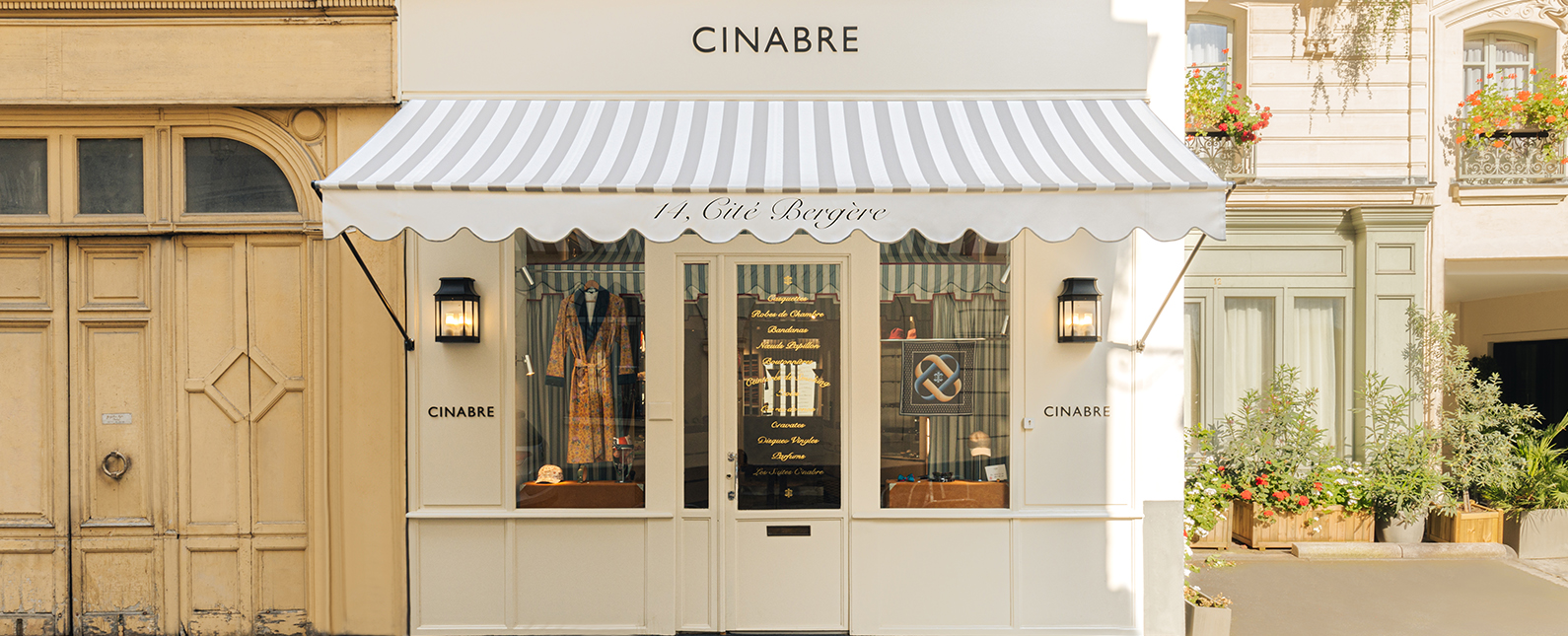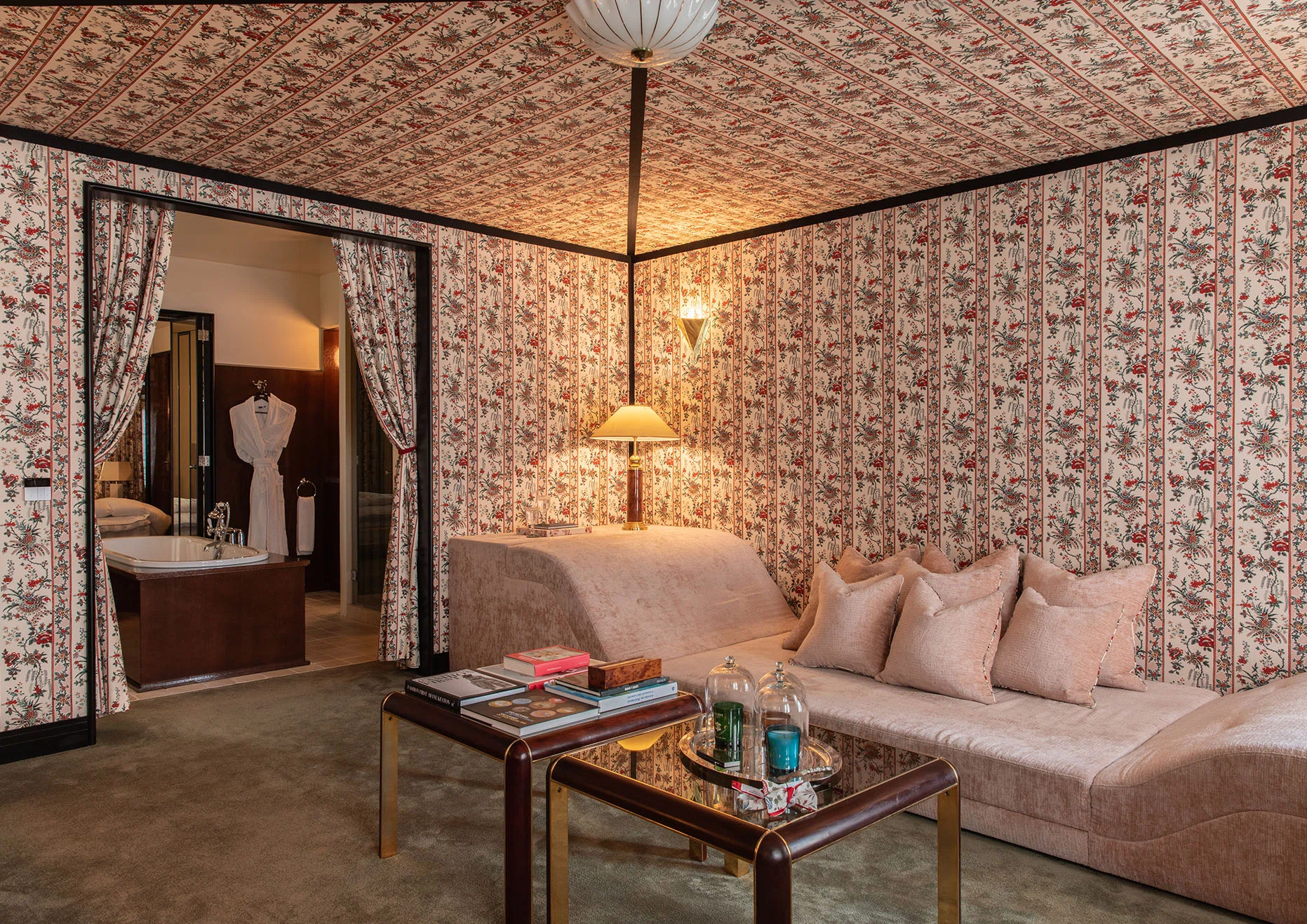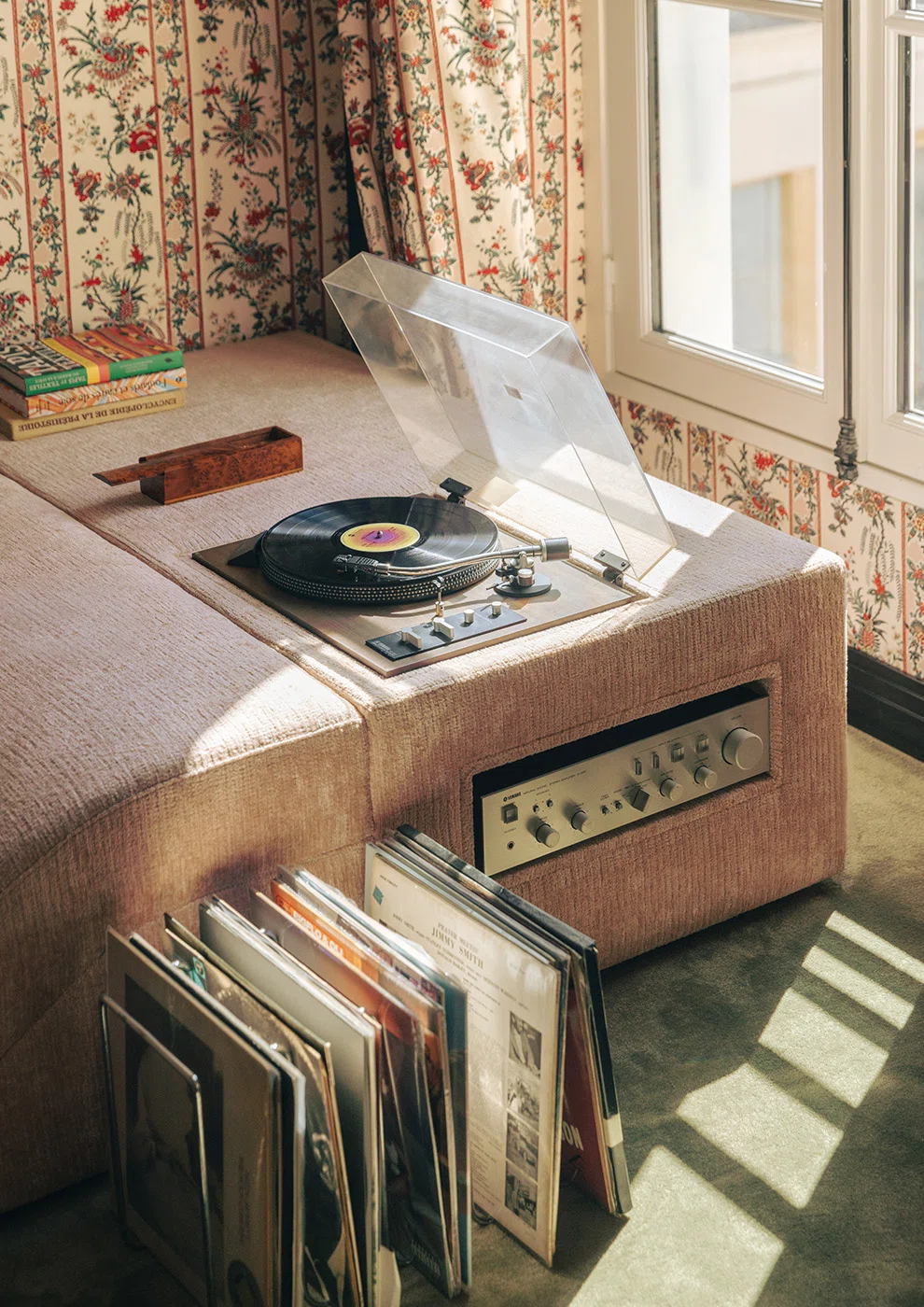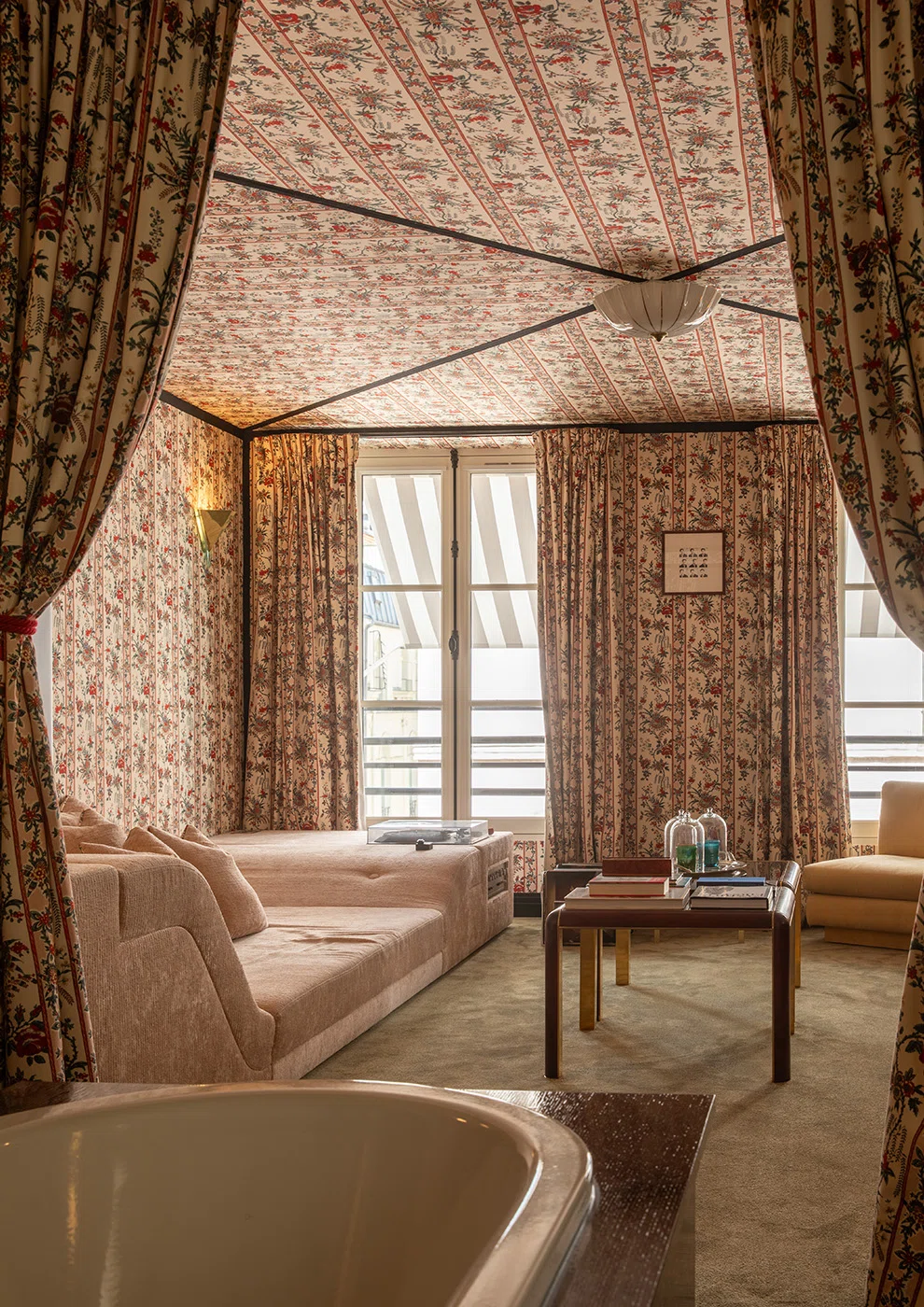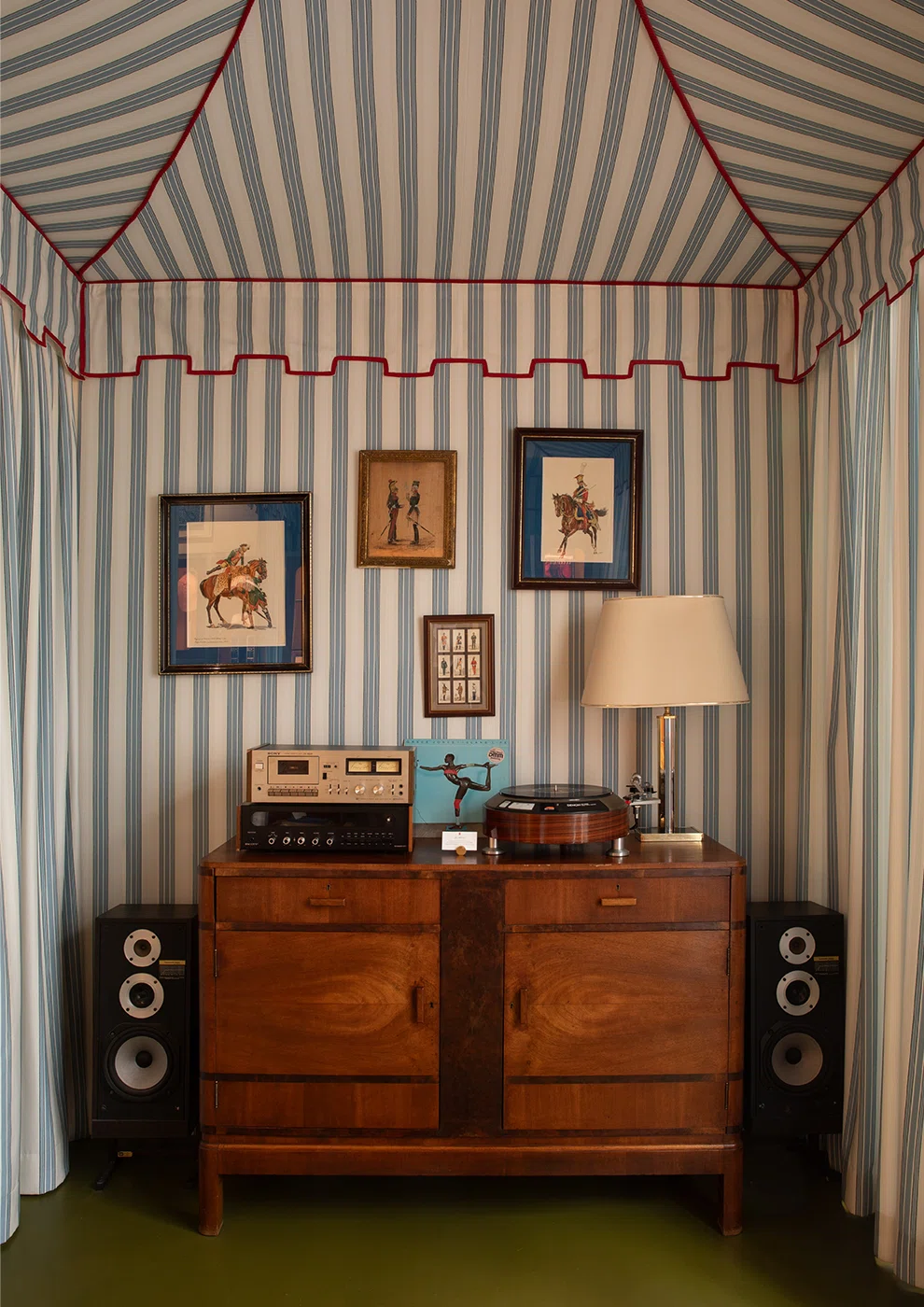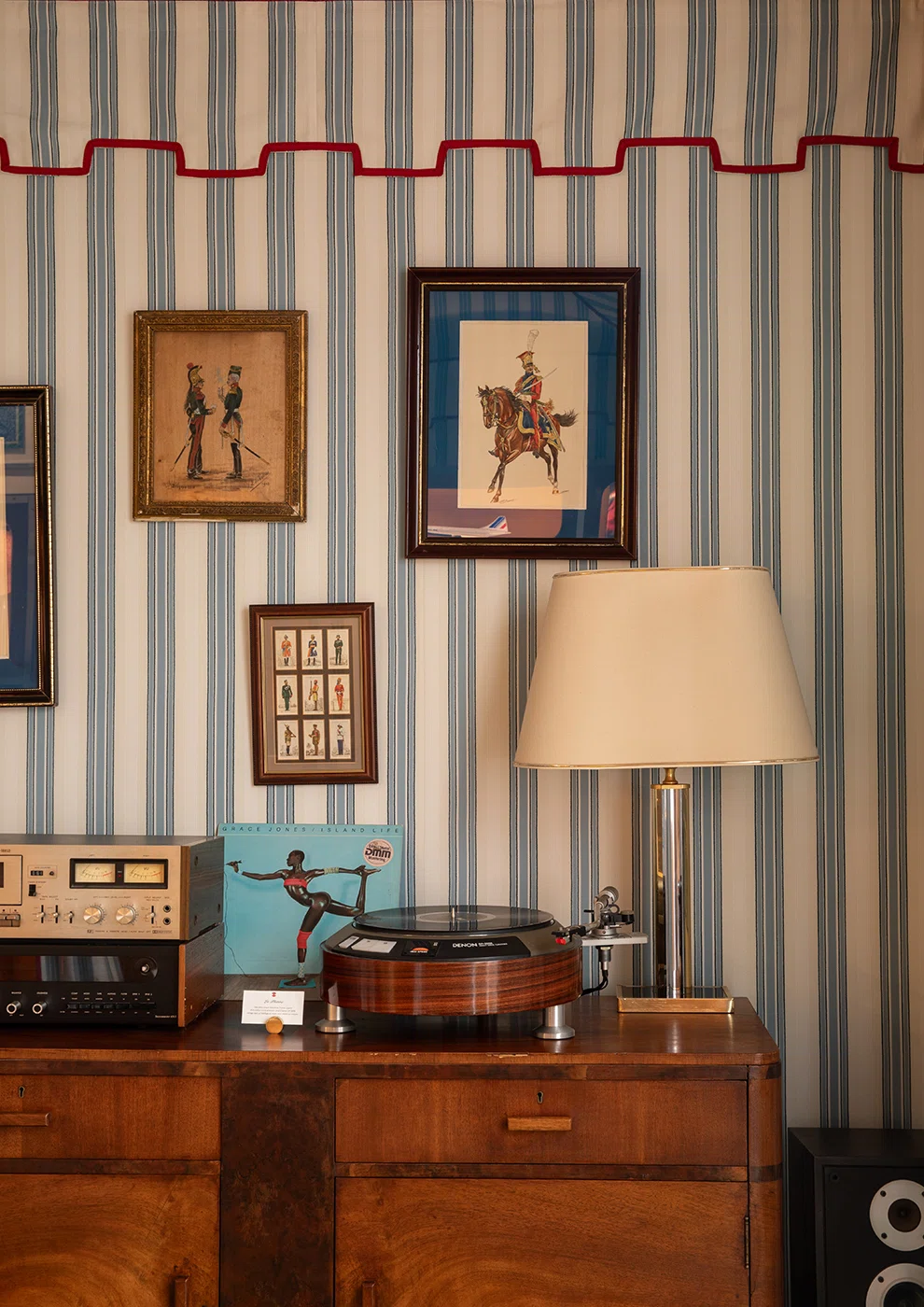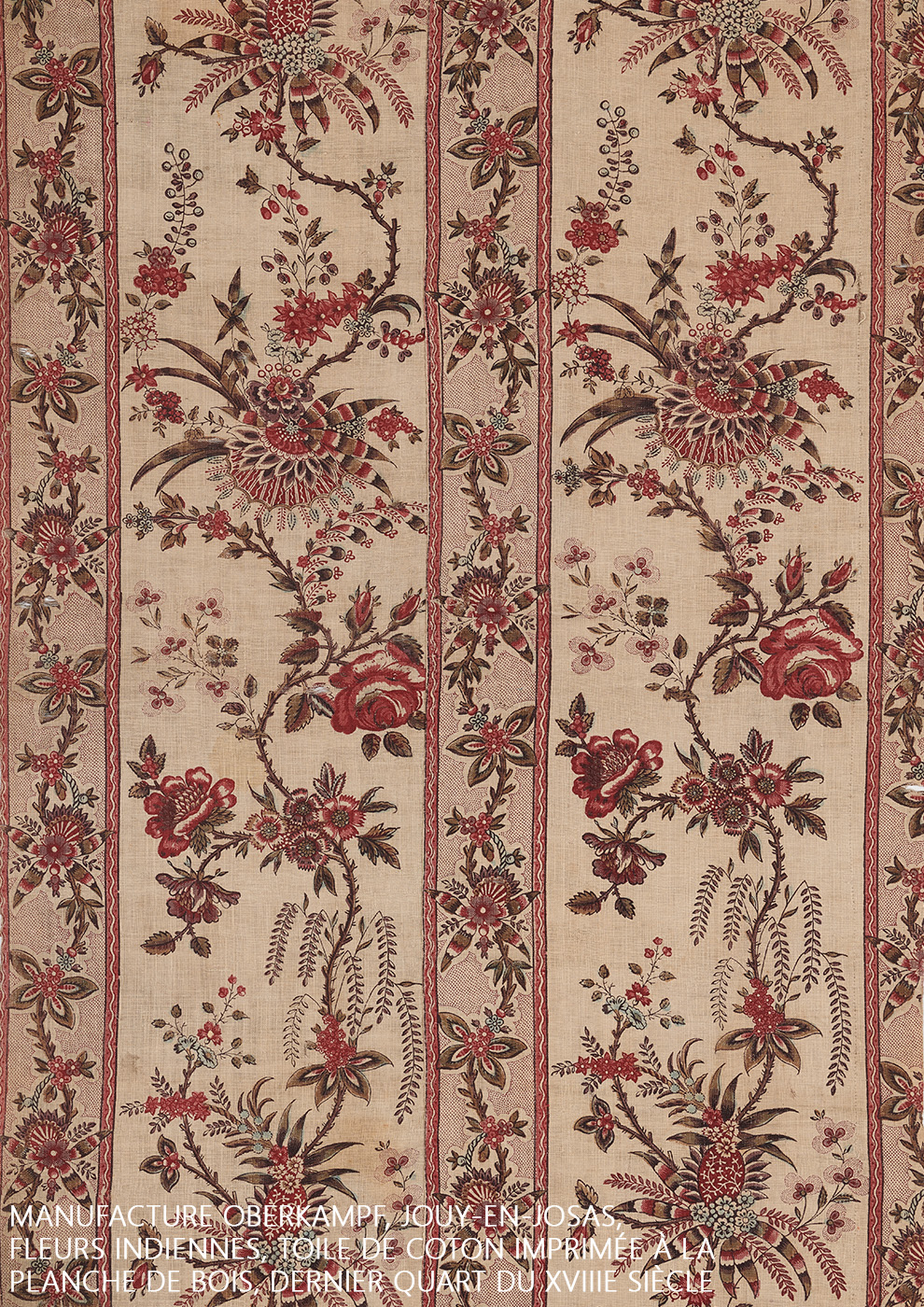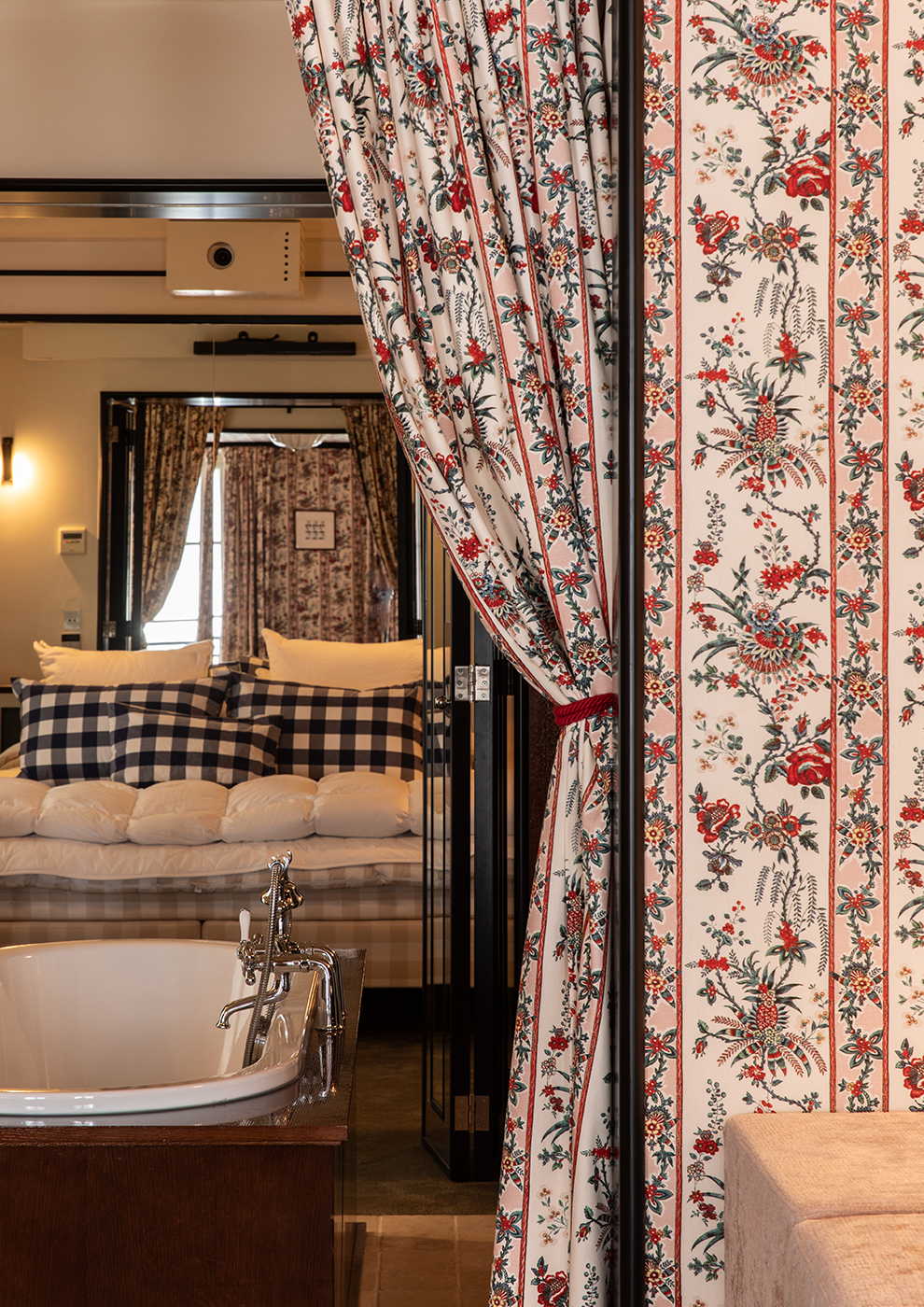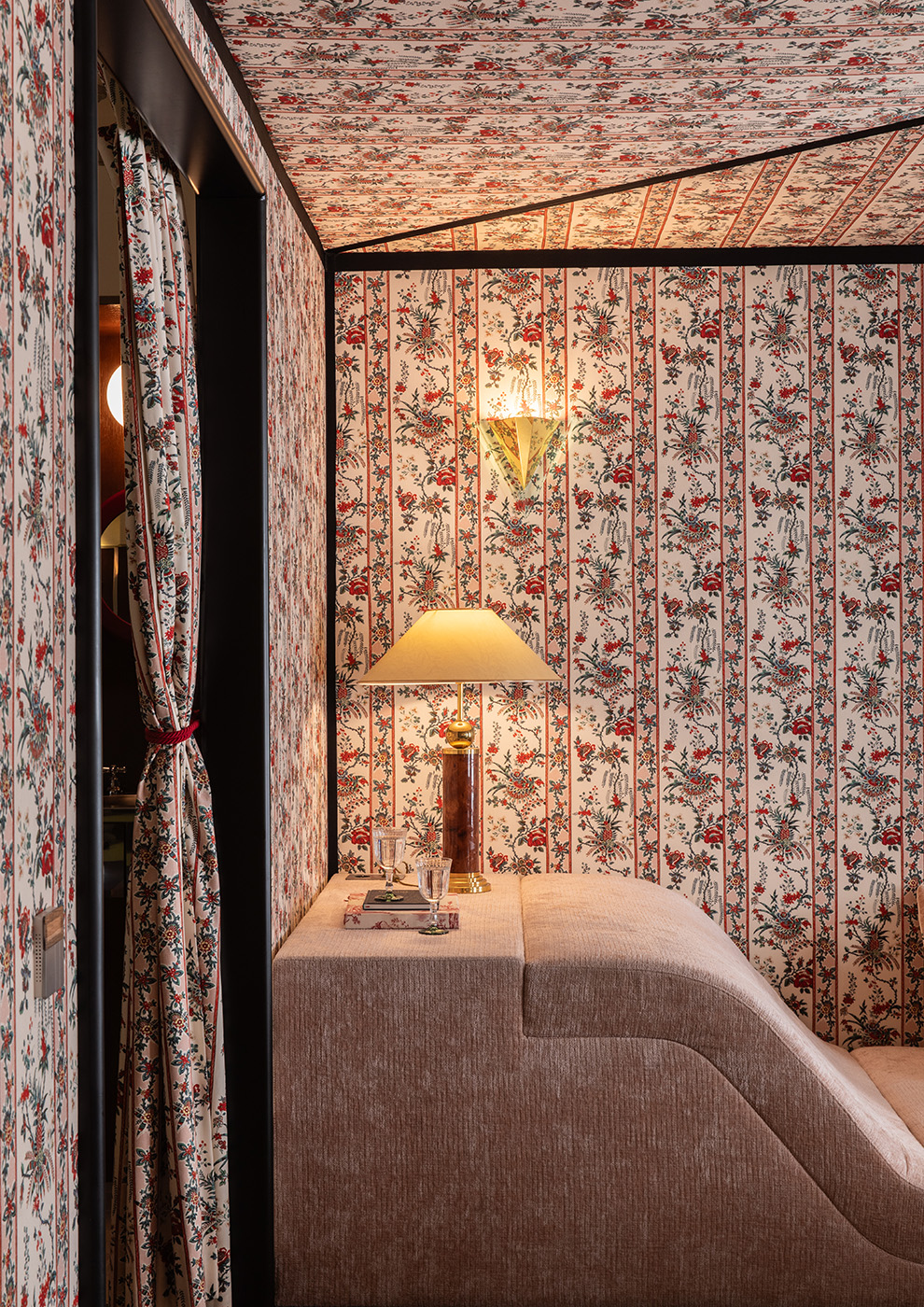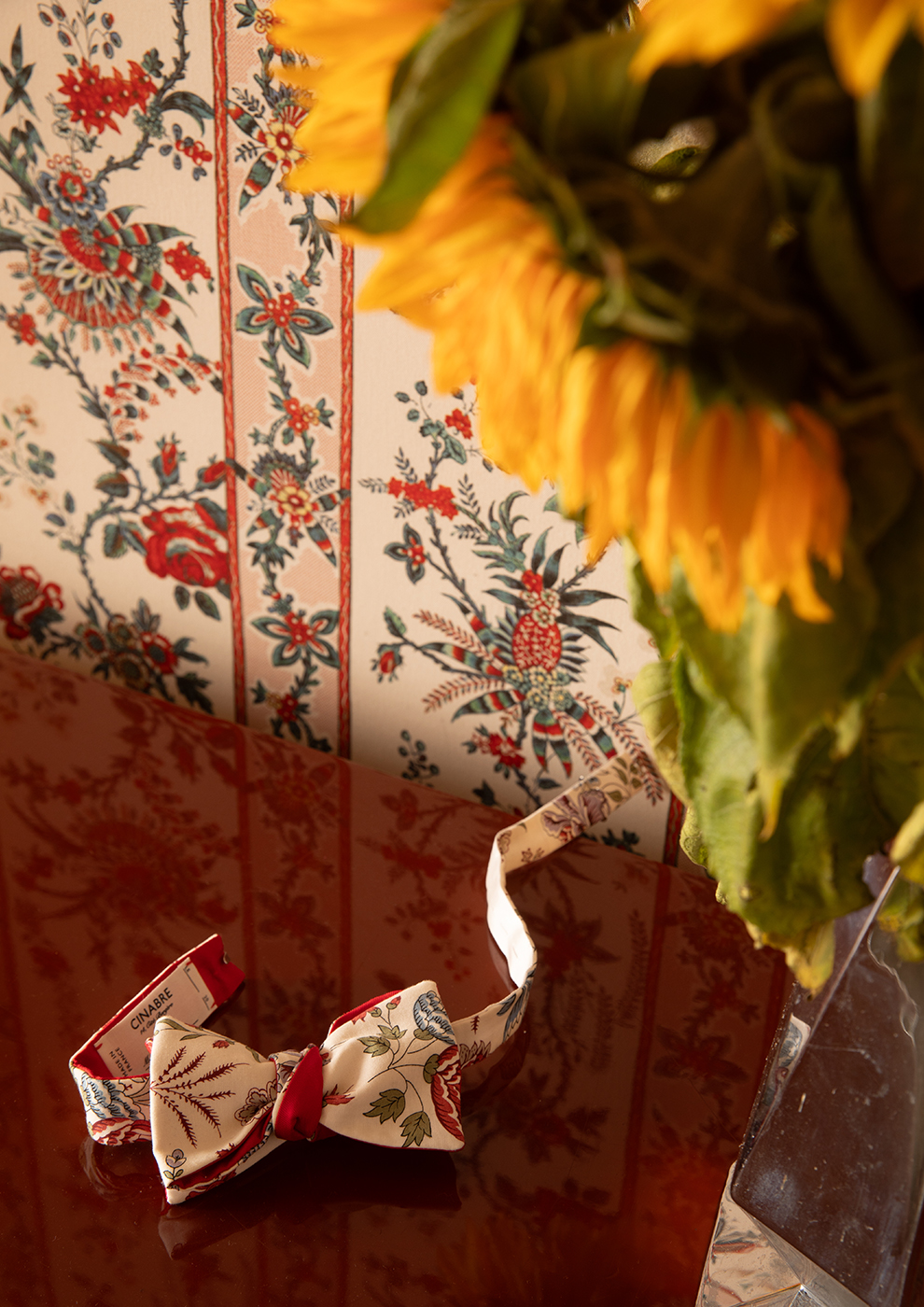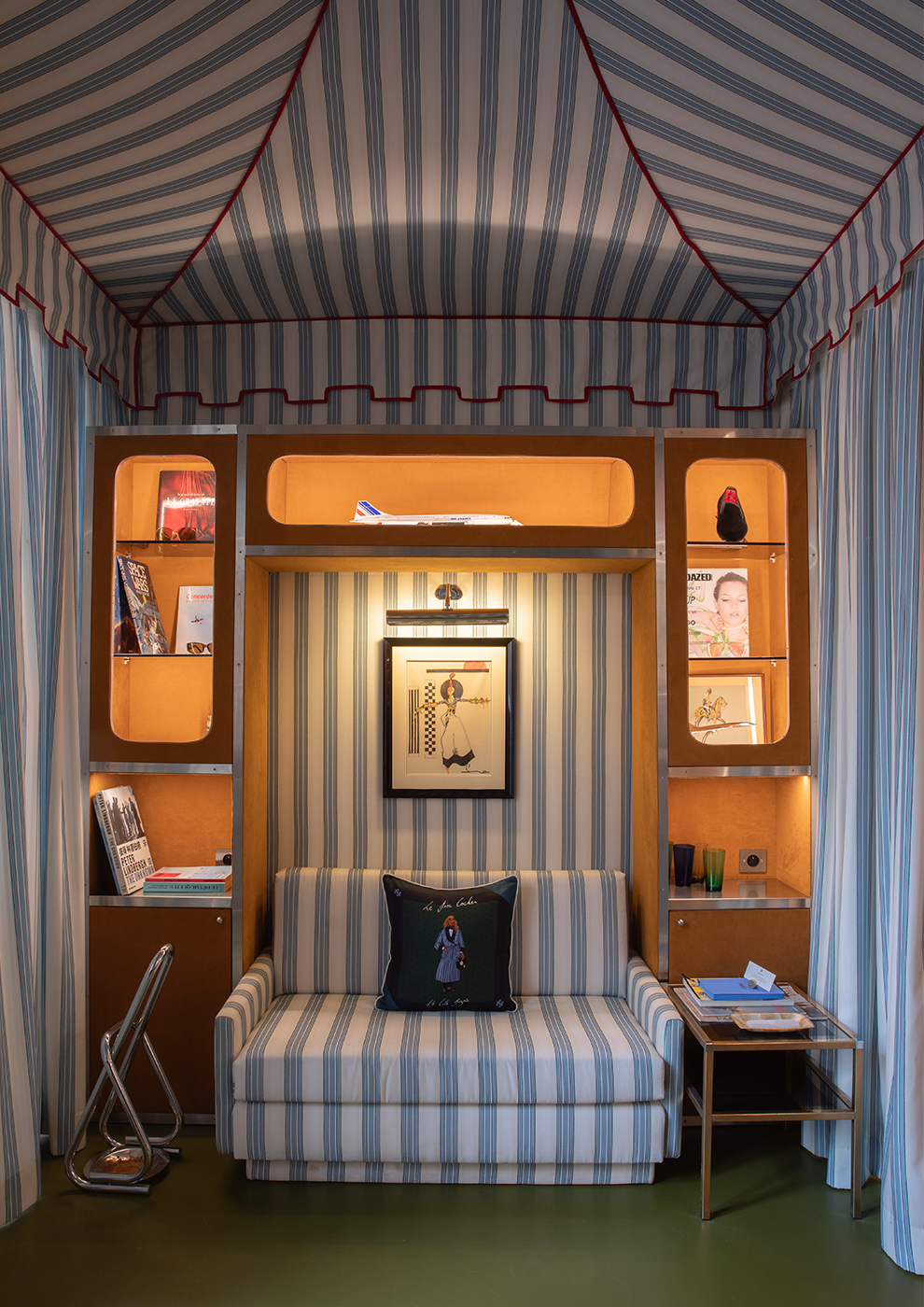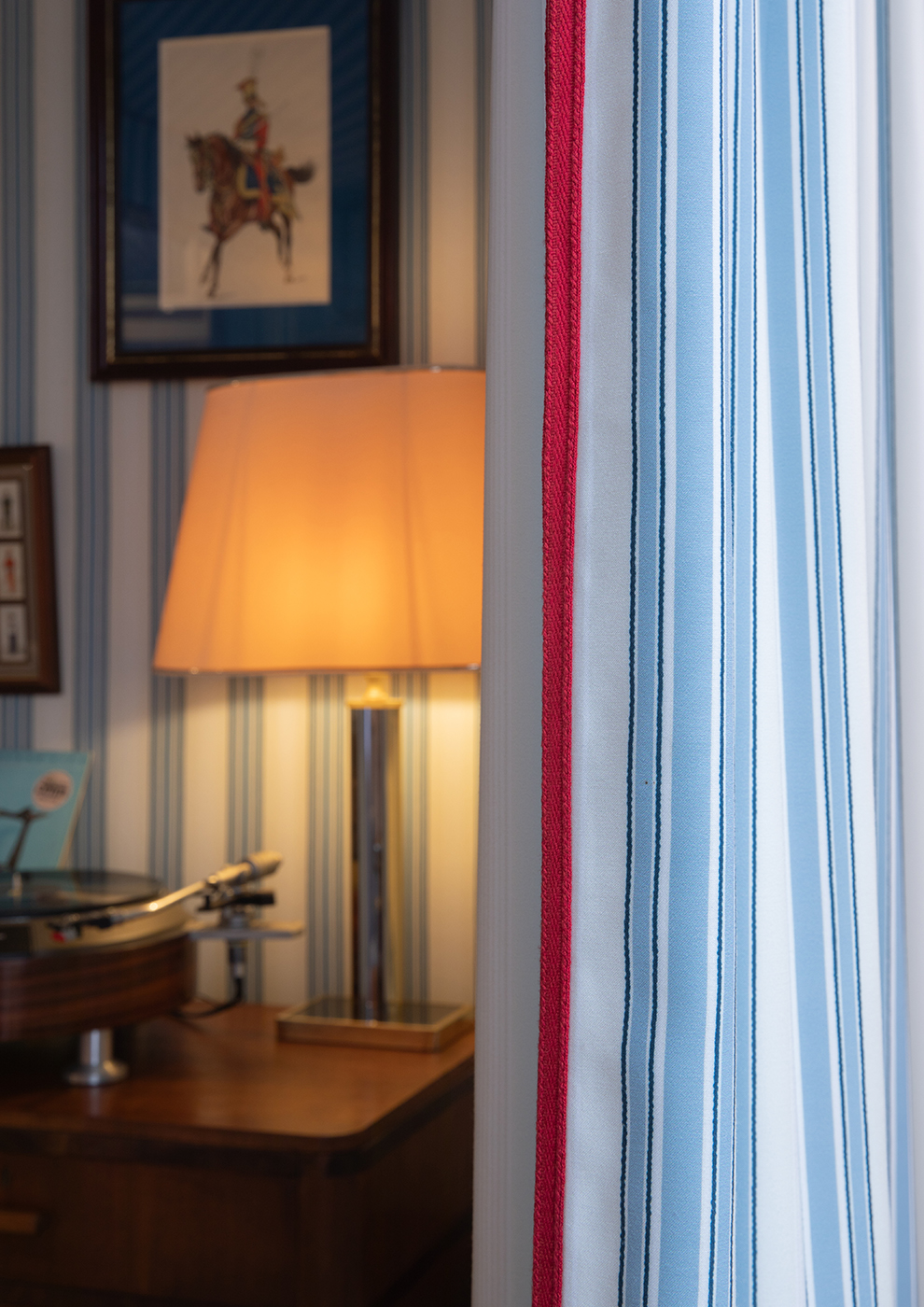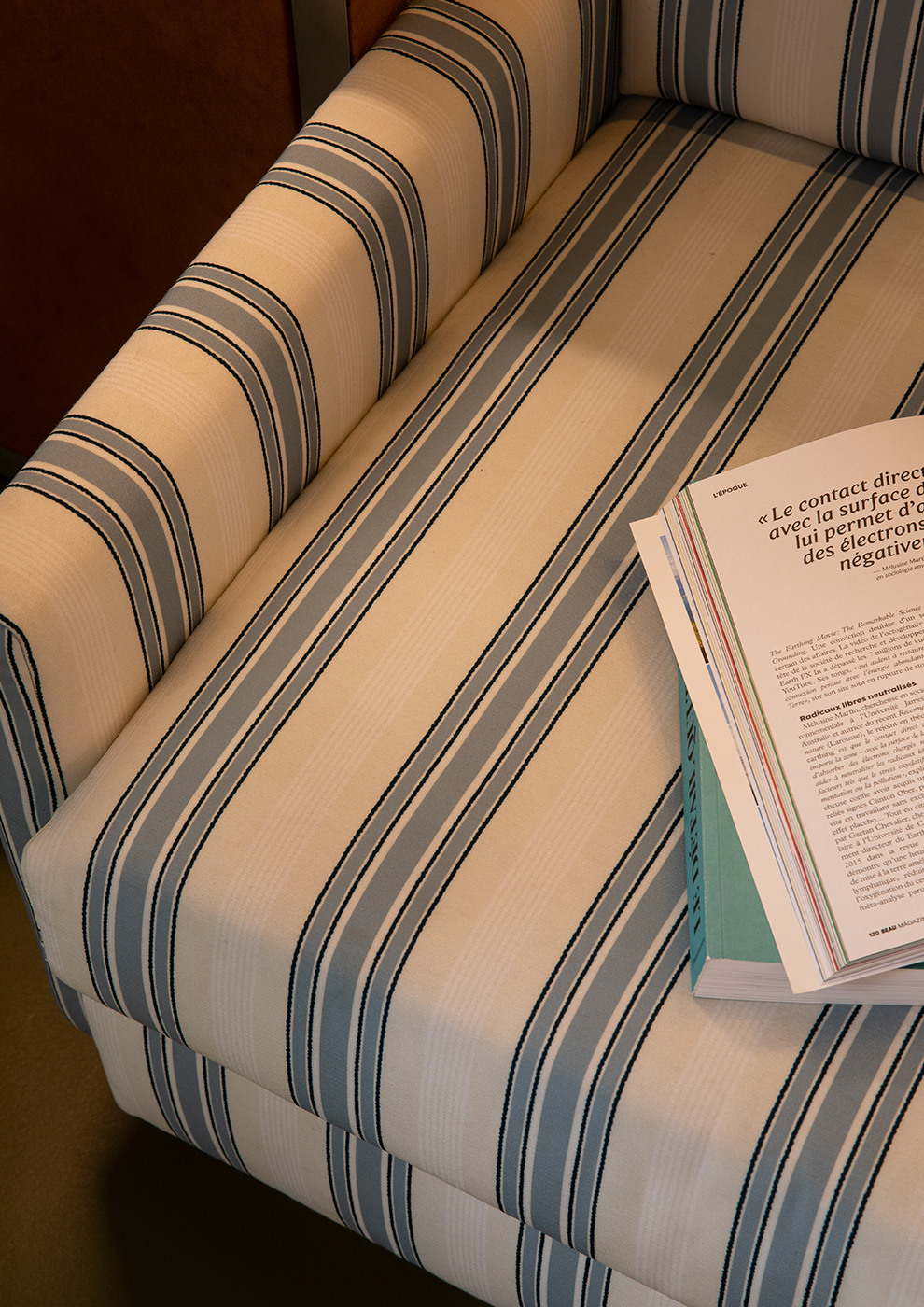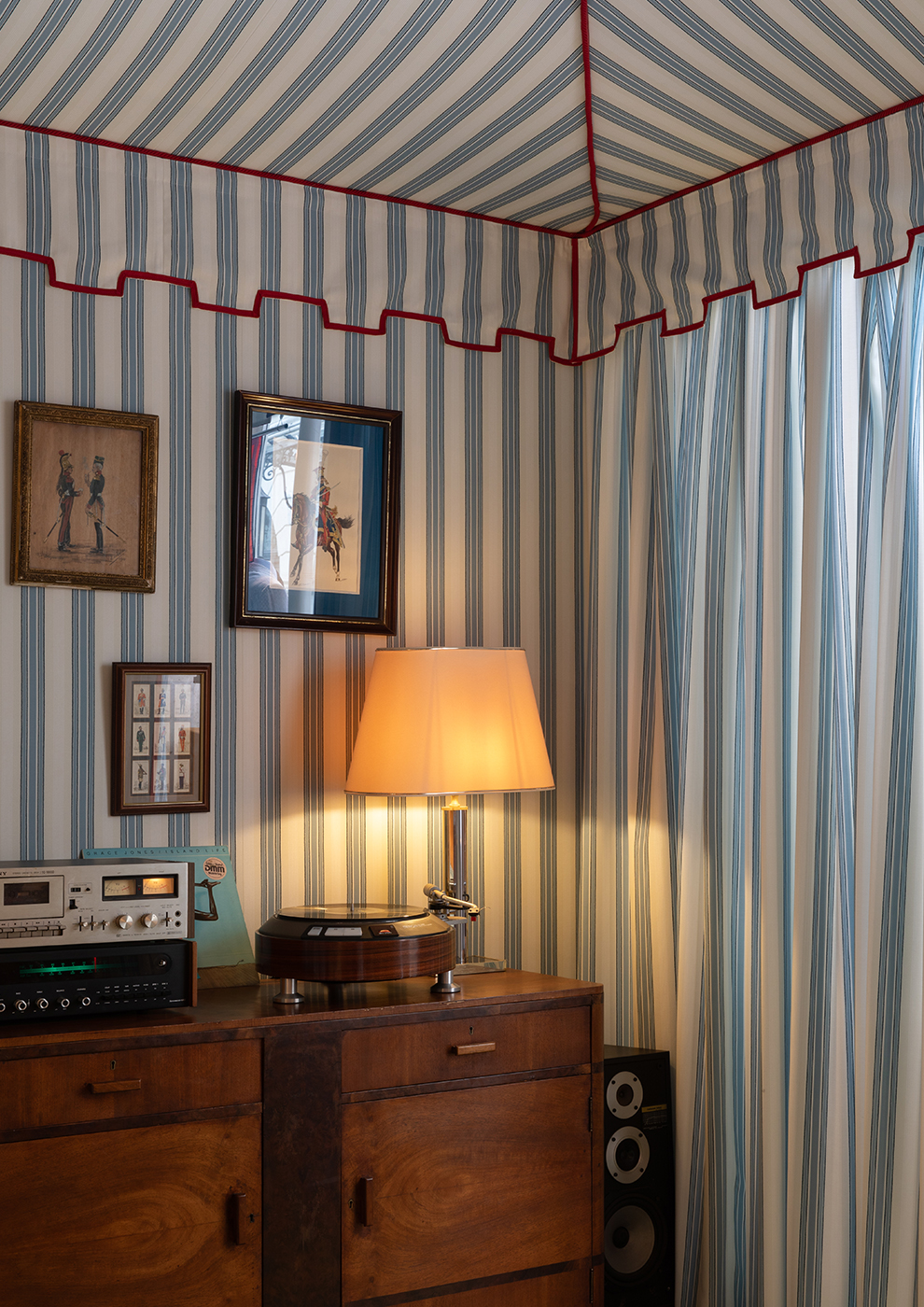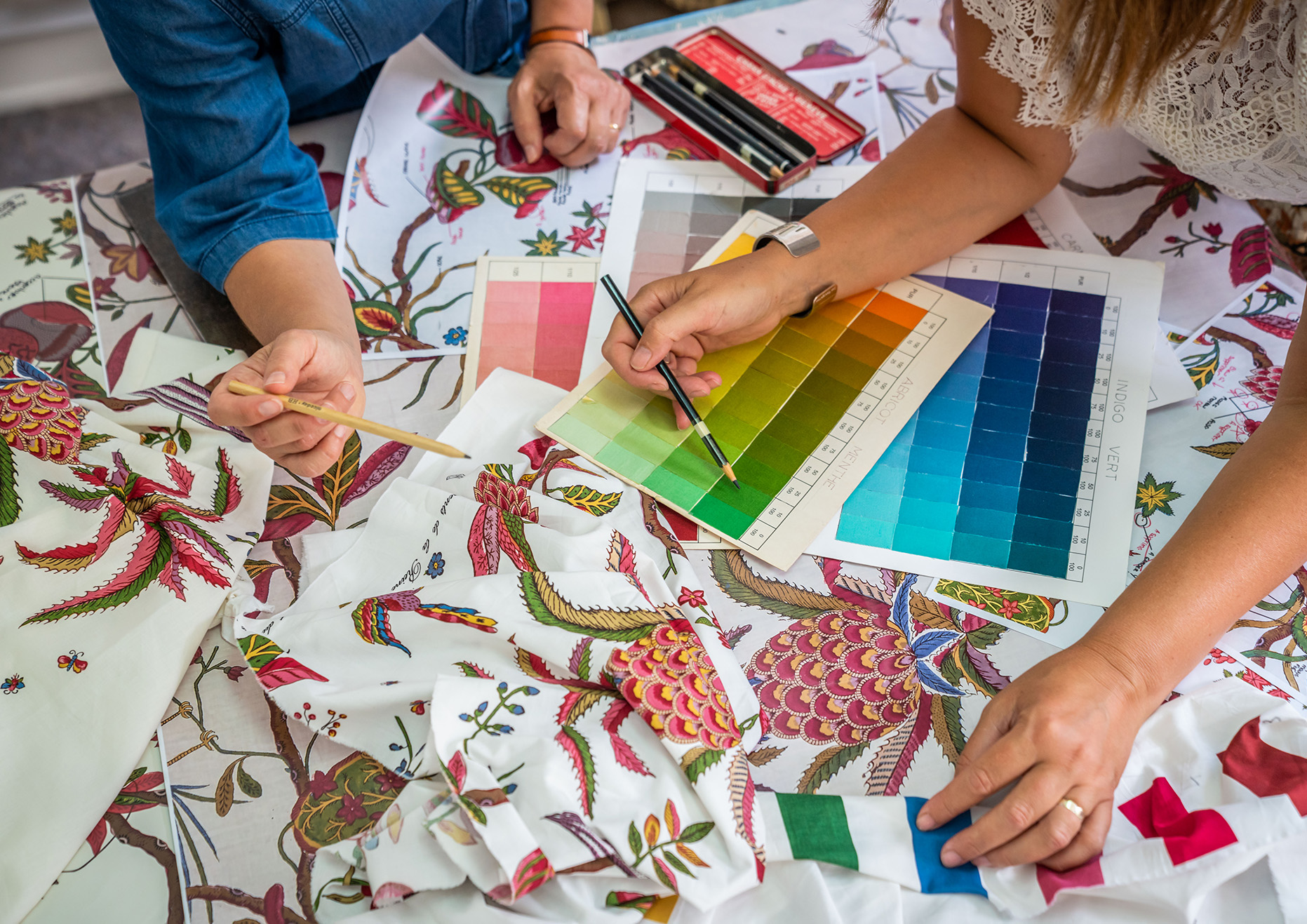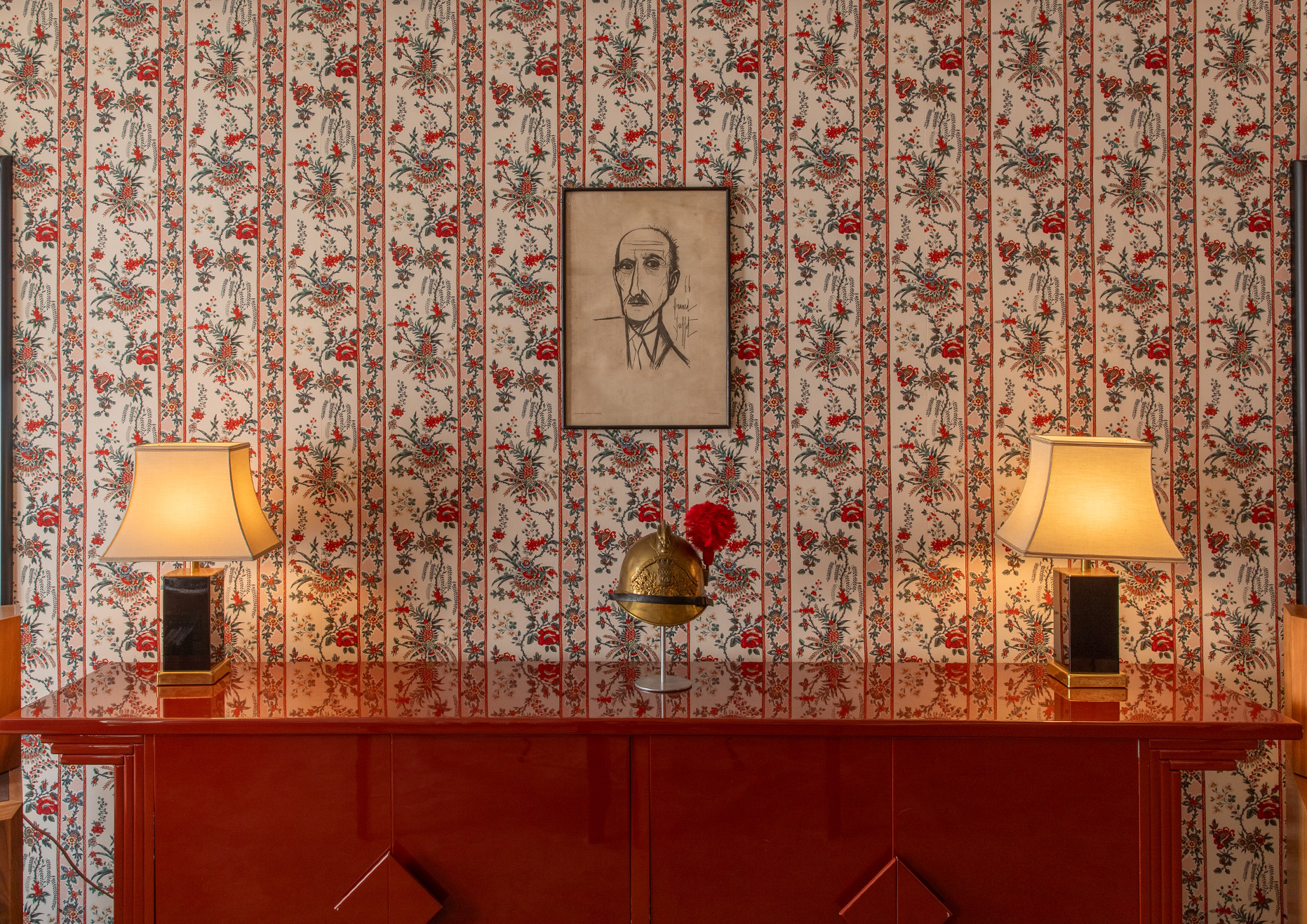Behind the scenes of the Cinabre Suites development.
Interview with Anna, textile designer for the Maison's Custom Orders:
How did the process of reproducing the Toiles de Jouy RÊVERIES INDIENNES and RAYURE MALMAISON unfold?
The journey began in the archives, during a meeting with Sophie Rouart, Head of the Heritage Department at the Maison. The client was introduced to a carefully selected array of historical documents and chose a Braquenié motif from our collection, an exclusive design that had never been reprinted. This original period drawing, though delicate with age, was torn in places and softened by a yellowed patina. It became the foundation for the entire reproduction process.
What was the biggest challenge you faced in this project?
The real challenge was transforming this old archive, once screen printed by hand, into a modern, contemporary fabric. It demanded a meticulous process of digitization, removing imperfections, updating the pattern repeat, and developing tailored color proposals for the client. Several cotton fabric tests followed, each step bringing us closer to the final design. The once anonymous drawing, simply identified by its inventory number, was reborn as Rêveries Indiennes.
How did you feel when you first saw the finished products? Were there any memorable moments during the manufacturing process?
My first reaction was one of sheer intensity. After spending days refining a drawing and months overseeing the project, you start to imagine a particular outcome. The beauty of this craft is in seeing the design take on new life, unexpectedly, vibrantly, and in a way you never imagined. With Rêveries Indiennes, the emotion was especially profound, as the design truly came to life, honored and celebrated in a way that felt deeply satisfying.
